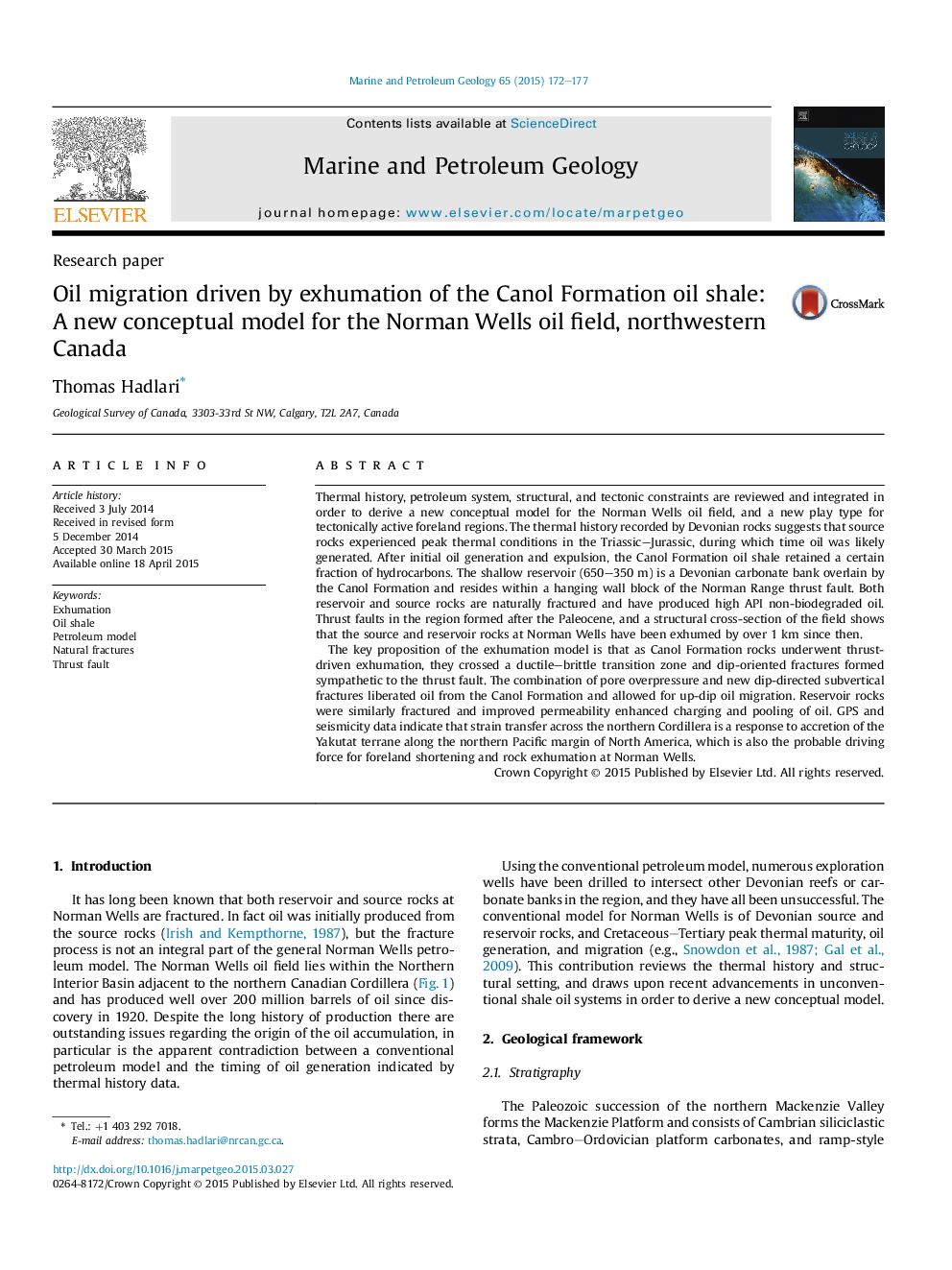| کد مقاله | کد نشریه | سال انتشار | مقاله انگلیسی | نسخه تمام متن |
|---|---|---|---|---|
| 6435050 | 1637160 | 2015 | 6 صفحه PDF | دانلود رایگان |

- A new play model is proposed for tectonically active foreland regions.
- In the new model, exhumation of the source rock triggers oil migration.
- Hydrocarbon charging of the reservoir is therefore a function of exhumation.
- Source rock rheology controls the undefined depth of the brittle-ductile transition.
- The model separates oil generation from oil migration by process and time.
Thermal history, petroleum system, structural, and tectonic constraints are reviewed and integrated in order to derive a new conceptual model for the Norman Wells oil field, and a new play type for tectonically active foreland regions. The thermal history recorded by Devonian rocks suggests that source rocks experienced peak thermal conditions in the Triassic-Jurassic, during which time oil was likely generated. After initial oil generation and expulsion, the Canol Formation oil shale retained a certain fraction of hydrocarbons. The shallow reservoir (650-350Â m) is a Devonian carbonate bank overlain by the Canol Formation and resides within a hanging wall block of the Norman Range thrust fault. Both reservoir and source rocks are naturally fractured and have produced high API non-biodegraded oil. Thrust faults in the region formed after the Paleocene, and a structural cross-section of the field shows that the source and reservoir rocks at Norman Wells have been exhumed by over 1Â km since then.The key proposition of the exhumation model is that as Canol Formation rocks underwent thrust-driven exhumation, they crossed a ductile-brittle transition zone and dip-oriented fractures formed sympathetic to the thrust fault. The combination of pore overpressure and new dip-directed subvertical fractures liberated oil from the Canol Formation and allowed for up-dip oil migration. Reservoir rocks were similarly fractured and improved permeability enhanced charging and pooling of oil. GPS and seismicity data indicate that strain transfer across the northern Cordillera is a response to accretion of the Yakutat terrane along the northern Pacific margin of North America, which is also the probable driving force for foreland shortening and rock exhumation at Norman Wells.
Journal: Marine and Petroleum Geology - Volume 65, August 2015, Pages 172-177